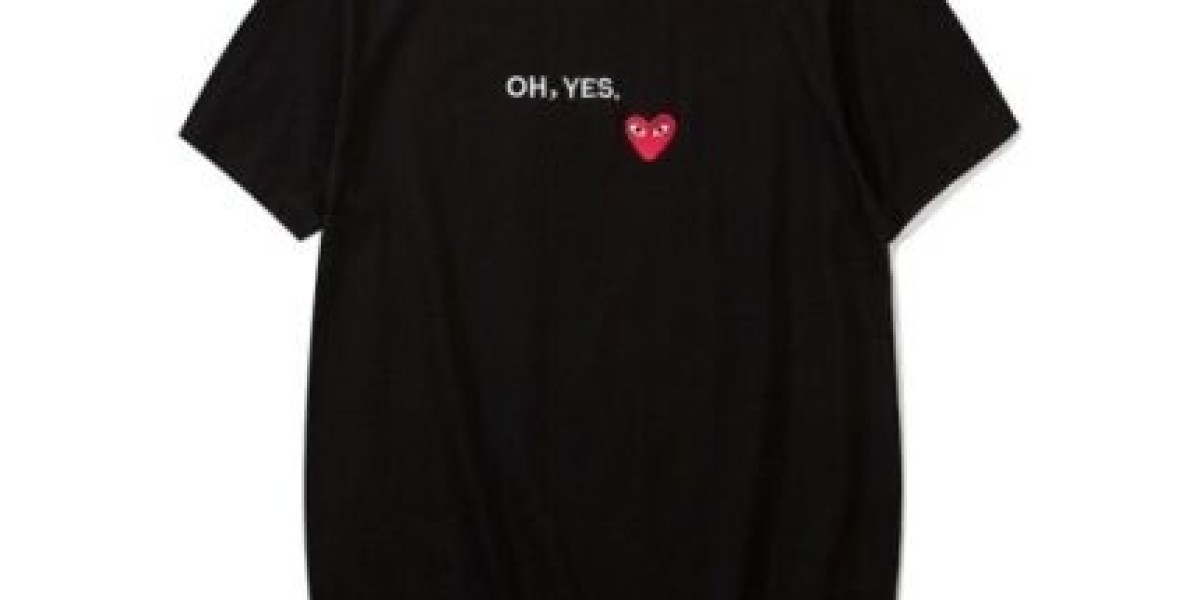In the landscape of contemporary fashion, few names have been as enigmatic, influential, and revolutionary as Comme des Garçons. Founded by Japanese designer Rei Kawakubo in 1969, the brand has consistently defied conventional notions of beauty, design, and commercial appeal. Rather than following Comme Des Garcons fashion’s ever-cycling trends, Comme des Garçons has carved out a universe of its own—one where the boundaries between art and apparel are not merely blurred but entirely dismantled.
The Visionary Mind of Rei Kawakubo
Rei Kawakubo is not just a fashion designer; she is a philosopher of form, silhouette, and texture. Her work challenges traditional aesthetics, often embracing imperfection, asymmetry, and deconstruction. While many designers work within the contours of the human body, Kawakubo reimagines the body itself as a canvas that can be obscured, exaggerated, or restructured. Her approach has redefined what it means to be fashionable—not in terms of trends, but in terms of thought, disruption, and expression.
When Kawakubo debuted in Paris in the early 1980s, Western fashion critics were stunned. Comme des Garçons’ pieces appeared ragged, colorless, and alien compared to the flamboyant excesses of the era. But in what critics labeled as “Hiroshima chic,” Kawakubo presented a bold alternative that was raw, poetic, and unashamedly intellectual. It was the birth of an aesthetic movement that valued conceptual depth over mass appeal.
Breaking the Mold: Deconstruction and Anti-Fashion
Comme des Garçons is perhaps most famous for its approach to deconstruction. While many associate fashion with flawless tailoring and symmetry, Kawakubo has always pursued something deeper. Her garments often appear unfinished or deliberately flawed. Seams are exposed. Shoulders are uneven. Dresses morph into sculptures. These design choices are not accidents but philosophical statements that question the assumptions we make about fashion, beauty, and identity.
This anti-fashion stance has given Comme des Garçons a distinctive space in the industry. The brand doesn’t seek to be beautiful in a traditional sense—it seeks to provoke, to inspire, and to open dialogue. Fashion becomes a language, and each collection is a message, not merely a seasonal offering. Kawakubo’s runway shows often carry themes that explore existentialism, gender fluidity, mortality, and even political commentary, transforming clothing into a powerful medium of cultural discourse.
Comme des Garçons and the Art World
The boundary between fashion and art is tenuous at best, and Comme des Garçons exists in that liminal space. It is no surprise that Rei Kawakubo was the subject of a major exhibition at the Metropolitan Museum of Art’s Costume Institute in 2017. Titled Rei Kawakubo/Comme des Garçons: Art of the In-Between, the exhibition was only the second time the Met had devoted a solo show to a living designer. The show underscored what many had already believed for decades: that Comme des Garçons is not simply fashion—it is art.
In Kawakubo’s hands, fabric becomes sculpture. The runway becomes performance art. Collections are conceptual installations. Each piece, while wearable in theory, often stretches the limits of functionality to emphasize its artistic merit. This aesthetic philosophy has earned the brand a cult-like following among artists, intellectuals, and avant-garde enthusiasts who view fashion not as consumption, but as commentary.
Commercial Contradictions: The Paradox of Success
While Comme des Garçons operates on the fringe of fashion norms, it is far from a niche brand. Its commercial arm is robust and multifaceted. From its flagship line to more accessible diffusion labels like Comme des Garçons PLAY and collaborations with global brands like Nike and Supreme, Kawakubo has managed to bridge the gap between the avant-garde and the mainstream without compromising the integrity of her vision.
This duality is one of the brand’s most intriguing contradictions. On one hand, Kawakubo remains staunchly resistant to mainstream fashion logic; on the other, she masterfully navigates the business landscape. Her strategy is one of fragmentation—creating multiple sub-labels, each with its own identity, customer base, and creative freedom. This decentralization allows Comme des Garçons to remain relevant in both the commercial and conceptual realms.
Influence on Contemporary Designers and Culture
The shadow of Comme des Garçons looms large over modern fashion. Designers such as Martin Margiela, Junya Watanabe (a former Kawakubo protégé), and even mainstream figures like Raf Simons and Demna Gvasalia have cited the brand as a pivotal influence. Its legacy can be seen in everything from the rise of androgynous silhouettes to the resurgence of raw, experimental tailoring.
But the brand’s impact goes beyond runway collections. Comme des Garçons has influenced how fashion is critiqued, consumed, and understood. It has played a key role in elevating fashion to the level of high art, urging both creators and consumers to think beyond fabric and form. In a cultural moment increasingly obsessed with fast fashion and mass production, Kawakubo’s commitment to intellectual and artistic integrity offers a radical counterpoint.
The Role of Identity and Gender
One of the most radical elements of Comme des Garçons is its approach to identity, particularly gender. From the beginning, Kawakubo designed clothing that did not conform to traditional gender norms. Her collections often feature garments that obscure the body rather than accentuate it, challenging the male gaze and binary definitions of masculine and feminine.
In a world where fashion is still largely segregated into “menswear” and “womenswear,” Comme des Garçons presents a fluid alternative. It opens up a space where identity is not dictated by garment categories but by self-expression. This approach has resonated deeply with younger generations and the LGBTQ+ community, who find in the brand an ethos of freedom and authenticity.
A Continuing Revolution
Comme des Garçons is not just a brand; it is an evolving ideology. Over the decades, Rei Kawakubo has proven that fashion can be a vehicle for thought, rebellion, and transformation. Each collection poses new questions and opens up new frontiers, refusing to settle into predictability or commercial comfort.
As the fashion world continues to grapple with issues of sustainability, authenticity, and artistic value, Comme des Garçons stands as a beacon of what is possible when creativity is unbound by market demands. It reminds us that fashion, at its best, is not just about looking good—it is about thinking deeply.
Conclusion: Fashion as Philosophy
In many ways, Comme des Garçons is not simply a brand but a philosophical movement. It invites us to rethink our assumptions about fashion and its place in the world. Through radical Comme Des Garcons Converse design, conceptual depth, and unwavering authenticity, it has challenged every norm it has encountered.
To engage with Comme des Garçons is to engage with a world where fashion is not merely worn but experienced—where garments are not objects, but ideas. In that sense, Rei Kawakubo has not only redefined what we wear but how we think about wearing. And that, ultimately, is the art of Comme des Garçons.








